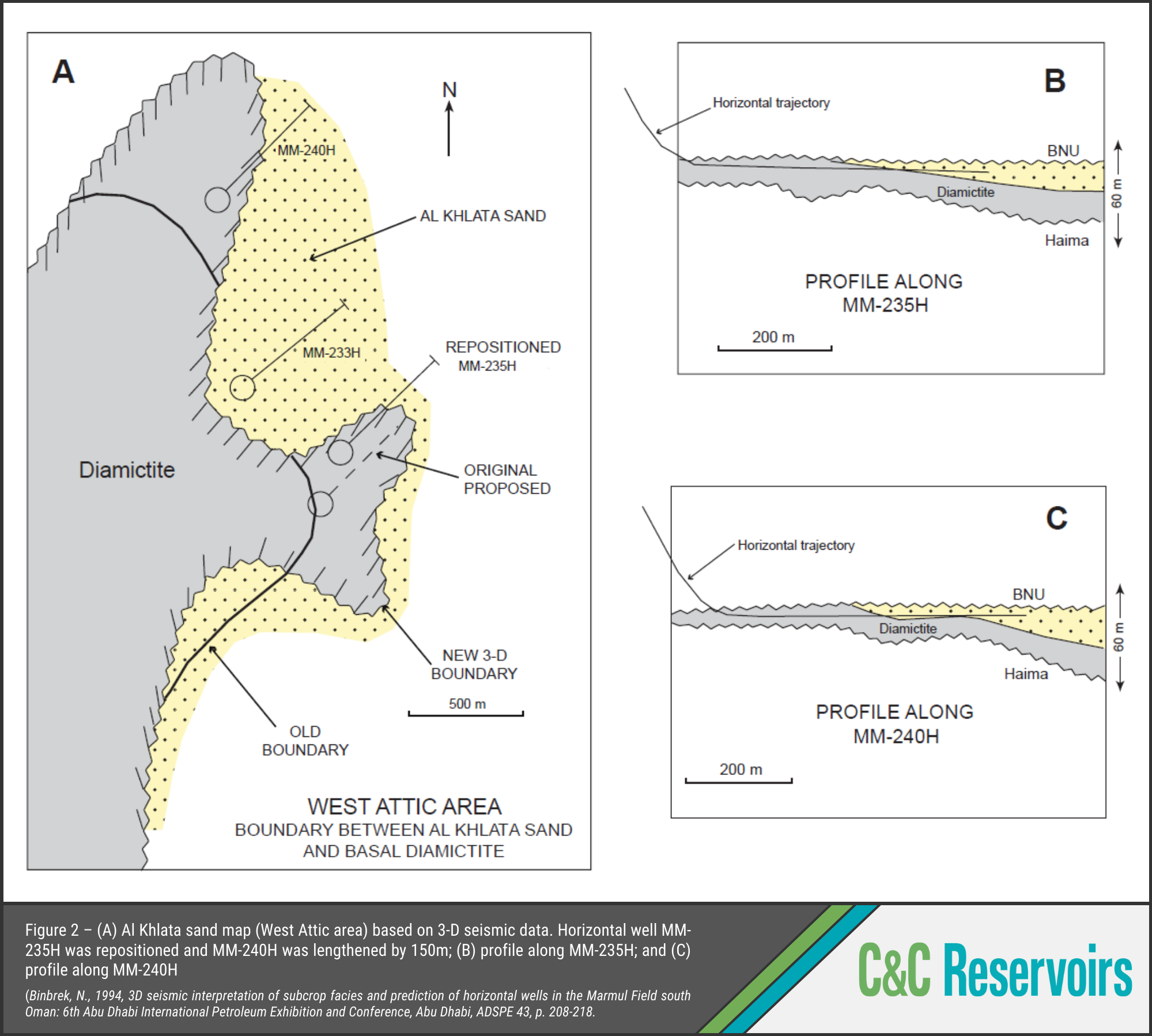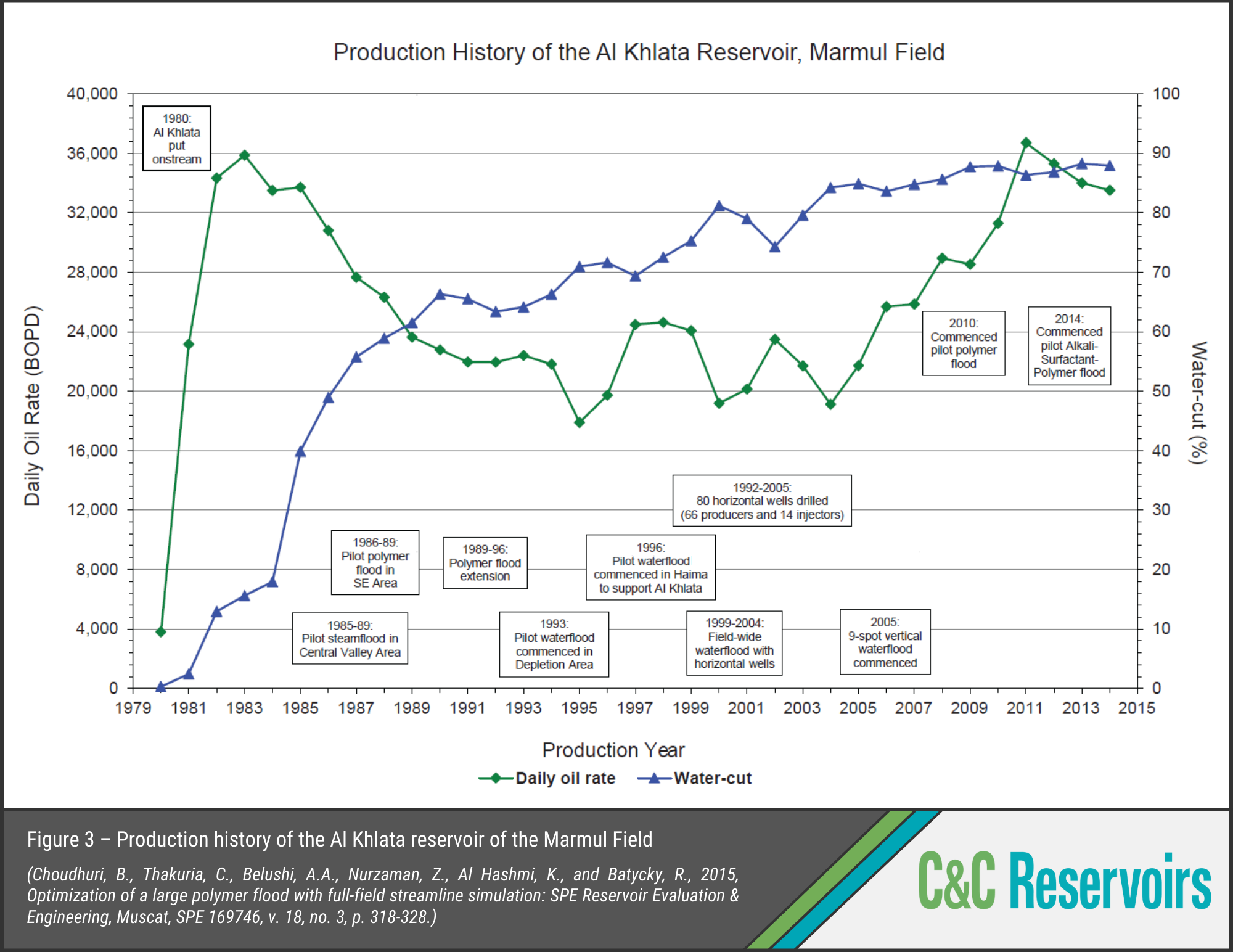The Al Khlata Reservoir
Analogue Spotlight
Now buried beneath the desert of Oman, the Al Khlata oil reservoir was deposited in a very different environment from today’s: a glacial plain.
At the Marmul Field, the Al Khlata reservoir is extremely heterogeneous. Super-permeable (>10 D) glaciofluvial channels are separated by tight diamictites and varved clays across lateral distances of <200 m (Fig. 1). Parts of the field are effectively cut off from the aquifer by these facies barriers.
Early steam flooding gave disappointing results as the unpredictable baffles hindered vertical and lateral sweep. However, the steam front’s progress, as tracked by seismic monitoring, shed light on the internal characteristics of the reservoir. This helped to optimize the steam, water and polymer injection strategy, and allowed perfect placement of horizontal wells inside the erratic channels (Fig. 2).
The project was a great success, resulting in a secondary peak production rate that exceeded the primary (Fig. 3)!



